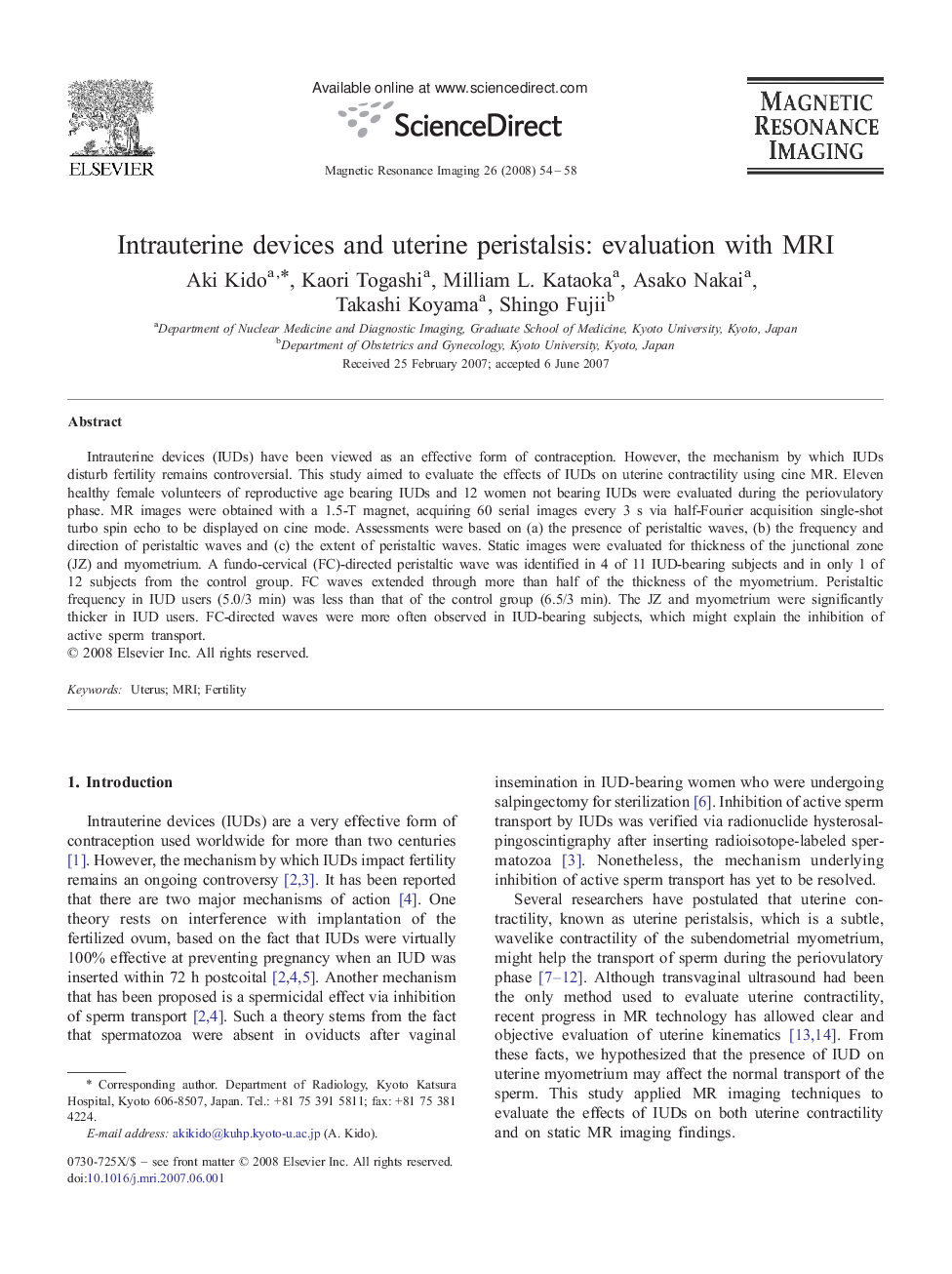| کد مقاله | کد نشریه | سال انتشار | مقاله انگلیسی | نسخه تمام متن |
|---|---|---|---|---|
| 1807385 | 1025259 | 2008 | 5 صفحه PDF | دانلود رایگان |

Intrauterine devices (IUDs) have been viewed as an effective form of contraception. However, the mechanism by which IUDs disturb fertility remains controversial. This study aimed to evaluate the effects of IUDs on uterine contractility using cine MR. Eleven healthy female volunteers of reproductive age bearing IUDs and 12 women not bearing IUDs were evaluated during the periovulatory phase. MR images were obtained with a 1.5-T magnet, acquiring 60 serial images every 3 s via half-Fourier acquisition single-shot turbo spin echo to be displayed on cine mode. Assessments were based on (a) the presence of peristaltic waves, (b) the frequency and direction of peristaltic waves and (c) the extent of peristaltic waves. Static images were evaluated for thickness of the junctional zone (JZ) and myometrium. A fundo-cervical (FC)-directed peristaltic wave was identified in 4 of 11 IUD-bearing subjects and in only 1 of 12 subjects from the control group. FC waves extended through more than half of the thickness of the myometrium. Peristaltic frequency in IUD users (5.0/3 min) was less than that of the control group (6.5/3 min). The JZ and myometrium were significantly thicker in IUD users. FC-directed waves were more often observed in IUD-bearing subjects, which might explain the inhibition of active sperm transport.
Journal: Magnetic Resonance Imaging - Volume 26, Issue 1, January 2008, Pages 54–58